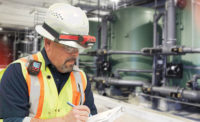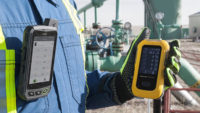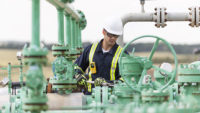Today’s consumers are no strangers to wireless technology. We can send and share updates with the touch of a finger. Automatic alerts and notifications remind us to pay our bills, lower the thermostat, and even take our medication. So why not apply the same technology to the portable gas monitor industry?
The stakes couldn’t be higher when it comes to monitoring for hazardous gases and toxic substances, such as methane gas, carbon monoxide, and oxygen. Professionals across a wide range of industries use portable gas monitors to measure air quality, so they can protect themselves from possible exposure. However, today’s wireless technology may help these professionals better tabs on their work environments, including crawl spaces, basements, sewers, manholes, and other confined spaces where air quality can be limited.
Benefits of wireless technology
Thanks to wireless technology, professionals can now automatically send and share air quality measurements from the field with their colleagues. As simple as a Bluetooth enabled gas detector and corresponding app. As soon as the user takes a new or updated reading, it can be shared with their supervisor to keep them informed every step of the way. The records will appear automatically on their wireless device, so they can then act accordingly.
This allows quick reaction to the situation at hand if the air quality changes. And with data storage no longer a barrier, the system will also keep a log of previous reports, so administrators can go back through the records and identify specific incidents or patterns. This may include modifying work routines, evacuating the premises, or taking additional precautions.
With wireless communication, supervisors and managers can react immediately if air quality becomes an issue. They don’t have to wait for one of their employees to contact them with the latest report.
Wireless portable gas monitors could help prevent dozens of injuries and deaths a year. According to the National Fire Protection Association, 784 people died of unintentional injuries due to non-fire exposure to gases in 2009. Anoxia, which is the injury related to oxygen deprivation, accounted for 33,600 injuries in hospital emergency rooms in 2012, including 16,800 with no fire involvement.
Choosing a gas monitor
What is especially exciting is the relative ease with which some of these new detectors can be set up on your phone. This is approaching consumer level flexibility and functionality, which is an interesting point of view. Against the backdrop of “normal” unconnected gas detectors, this trend does seem remarkable. The “always on” level of detail and timeliness is a welcome development.
There are a number of wireless gas monitors on the market today. Monitors automatically send the latest gas readings and reports directly to the supervisor’s smartphone app. Users can also set up automatic text and email notifications, so if an alarm goes off, multiple parties will be notified immediately.
Wireless technology is here to revolutionize the portable gas monitor industry. Supervisors and safety managers no longer have to wait for their workers to manually upload and share their findings and readings. The gas monitor will automatically share the latest data with team leaders and managers, so everyone can stay on the same page. Use this technology to improve the safety of your workplace.



